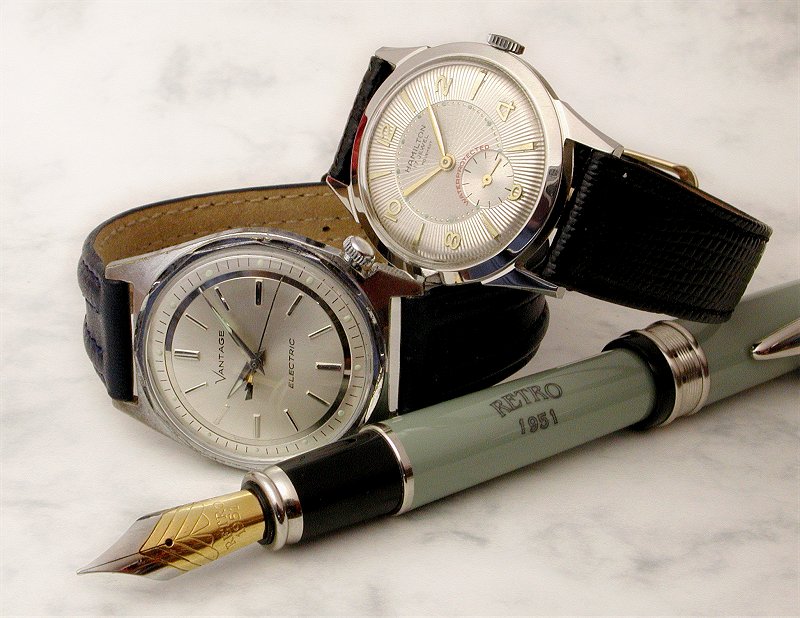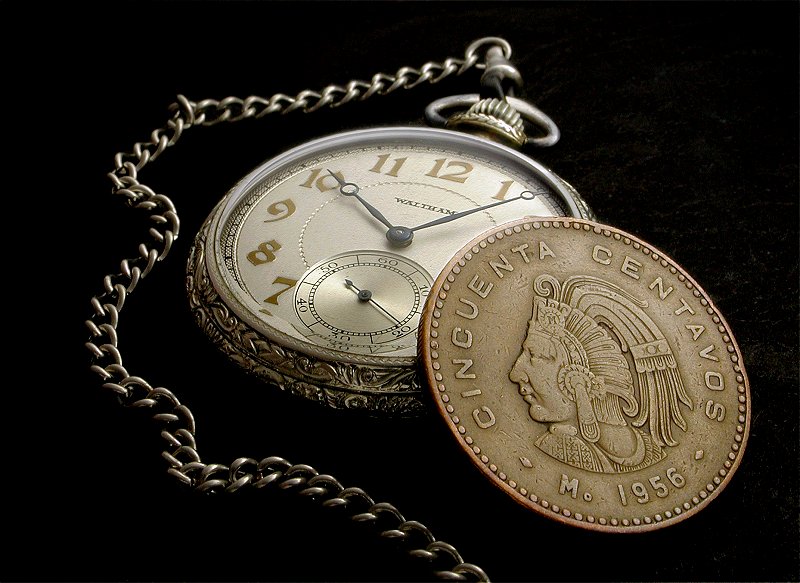

The Rule of 3 is one of my own making, and one that I happily depart from as the whim takes me. However, I have found that it is a useful compositional tool. In short, the Rule of 3 simply dictates that there be 3 points of interest in a picture. Here are 3 examples.
Below we have a clear example of the Rule of 3 in action - the two watches and pen from a triangle that is (supposedly) pleasing to the eye. It can seem natural and balanced, even though the items may be positioned in ways that would not likely occur in real life. The main point of interest can be made more conspicuous by positioning and/or lighting. In this image all 3 points of interest are given near equal emphasis.

In the next example, the Rule of 3 is satisfied by the coin, watch, and chain. Note that the items don't need to be separate. The watch and chain are joined but the positioning of the chain makes it act as a 3rd point of interest, filling out the left side of the image. In this shot I have emphasised the coin, via both positioning and lighting, to make it the main subject.

Remember, the Rule of 3 deals with 3 points of interest, not 3 subjects. The picture below has more than 3 subjects but it has only 3 points of interest - the watch, the chess board, and the chess pieces. The watch has been emphasised as the main point of interest by the use of colour.

As with any compositional rule, the Rule of 3 is there to be broken if something else works as well or better, and good compositions can be made with 1, 2 or 10 points of interest. It just takes some experimentation and a lot of looking through the viewfinder until you are happy with what you see.
Copyright 2005 Paul Delury